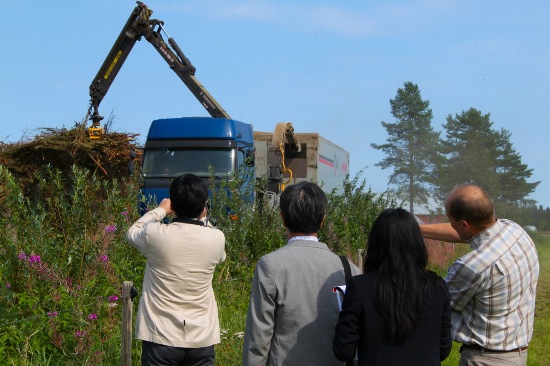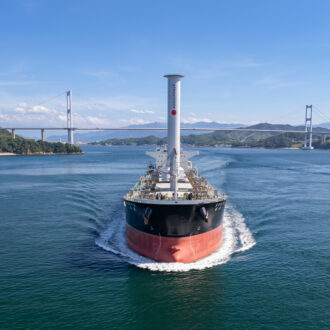Green energy promoters from around the world are increasingly taking an interest in eastern Finland, Europe’s leading region in the sustainable use of wood energy.
The search for renewable energy sources is becoming increasingly urgent due to worries about climate change. In regions of the world with extensive forests there is growing interest in using surplus wood to generate bioenergy.
But for wood energy to be truly sustainable, forests must be managed to ensure that the carbon released when using wood energy is bound up again in the growing forests.
“Eastern Finland is an ideal region for utilising wood energy, since forests cover more than two-thirds of the land, and the amounts of wood in the forests are increasing even though wood is widely used to manufacture timber and paper products, and nowadays also to generate wood energy,” says Jouko Parviainen [no relation to thisisFINLAND editor Paula Parviainen], coordinator of Wenet, a Joensuu-based network of expert consultants and suppliers working with all aspects of wood energy.
Cashing in on woodchips
Hundreds of large and small wood energy businesses are already up and running in eastern Finland. The woodchips used for wood energy typically come from forest thinnings or logging residues – young trees, branches, treetops and stumps that cannot be economically used to make timber or paper products.
The use of wood chips to generate energy is rising rapidly in Finland towards ambitious targets set for 2020 as part of EU-wide efforts to find substitutes for nonrenewable fossil fuels.
Know-how and show-how
“Wenet organises show-how tours here in eastern Finland to demonstrate how wood energy works in action,” explains Parviainen. “Visitors see for themselves how energy wood is harvested from thinned forests and logging sites, and how the wood is chipped, dried and then used in heating plants or combined heat and power plants. They also typically want to investigate out how wood energy business models work in practice.”
Wenet has welcomed budding energy entrepreneurs from Canada and Japan, as well as visitors from around the EU and Russia. More than 150 international stakeholders hit the eastern Finnish town of Koli for the Wood Energy Solutions 2011 conference from January 31 to February 2, 2011.
Forestry machines and energy pellets
Parviainen points out that two-thirds of all the forestry machinery sold in Europe is manufactured in eastern Finland, and machine makers Andritz have a major wood energy boiler production facility in Varkaus. “Local municipalities are also active, with woodchip-fired district heating schemes spreading in urban areas as well as more remote communities,” he adds.
Wood pellets made of compressed chips and sawdust form another increasingly popular energy source. Clean-burning pellets can be used instead of heating oil in homes and larger premises like schools and sports centres.
Last year more than 300,000 tonnes of wood pellets were produced in Finland. Domestic demand is rising, but pellets are still widely exported on bulky barges that sail through the waterways of eastern Finland to the Baltic Sea. The University of Eastern Finland’s research centre at Mekrijärvi on the Finnish-Russian border is testing new ways to produce energy pellets from different raw materials.
International interest in eastern Finland’s wide-ranging wood energy expertise is likely to intensify as the world seeks to wean itself off fossil fuels by finding local and sustainable energy solutions.
By Fran Weaver, November 2010





